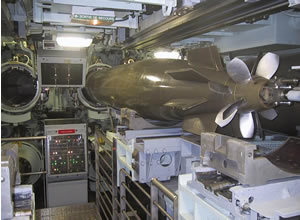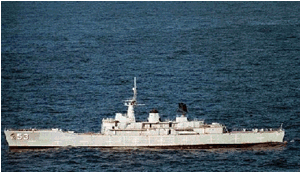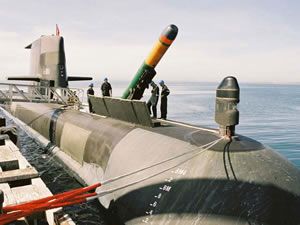Science of Conflict
The torpedo
|
Not all torpedoes
are designed to home in on the target and explode on impact. Some are
designed to explode several metres below the hull of a ship in order
to cause maximum damage.
|
|
On detonation,
triggered by recognition of the ship's magnetic signature, a spherical
gas bubble forms. A high pressure shock wave moves through the water and
applies a huge force to the hull crushing it and lifting it out of the
water. After 0.5 seconds the gas bubble shrinks, under pressure, causing
the ship to sag and fracture even more. One second after the explosion
the pressure bubble expands violently forming a high velocity water jet
that moves through the hull of the ship destroying its deck. |
|
| Actual footage of an MK-48 is
shown on the right. Modern day torpedoes do not operate by slamming into
the hull of a ship and exploding. Ships are made of many watertight compartment
which can be sealed off when damaged and become flooded. The ship can keep
floating and even be repaired. At the very least the ship will take longer
to sink and allow for its personal to be evacuated. By exploding the warhead
under the ship the hull is split in two and the ship immediately sinks.
|
|
| An Australian Collins Class
submarine is pictured on the right loading a torpedo. Image and information
from the Australian defence web page. The MK-48 is designed to combat fast,
deep-diving nuclear submarines and high performance surface ships. The MK-48
has been in service in the U.S. Navy since 1972. MK-48 ADCAP entered service
in 1988.
|
|
| The MK-48 and MK-48
ADCAP torpedoes are part of the Collins Class submarine's arsenal. They
can operate with or without wire guidance and use active and/or passive
homing. When launched they execute programmed target search, acquisition
and attack procedures. Both can conduct multiple re-attacks if they miss
the target. |
Why
are modern torpedos, such as the Mk-48 more effective against ships than
older torpedos that detonated when colliding with the hull of the ship? |
|



